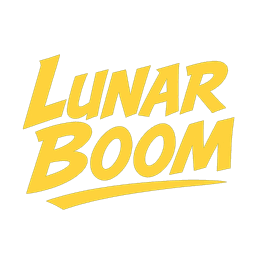Art in the Age of Algorithms
Remember when creating art required years of practice, expensive materials, and a studio space? Those days aren't gone, but they're certainly being reimagined. AI tools like DALL-E, Midjourney, and Stable Diffusion have burst onto the scene, generating stunning visuals from text prompts in seconds. For many artists, this has sparked a mix of fascination and concern.
"Is AI coming for my job?" It's a question that's crossed the mind of nearly every creative professional. But here's the thing—throughout history, new technologies have always transformed art, from the camera's impact on painting to digital tools revolutionizing design. AI is just the latest chapter in this ongoing story, and it's one where artists still get to help write the narrative.
"The relationship between artists and AI isn't about replacement—it's about augmentation, collaboration, and the expansion of what's creatively possible."
New Tools, New Possibilities
AI isn't just generating images—it's opening doors to creative possibilities that simply weren't accessible before. Think of it as having a tireless assistant who can help you visualize concepts, explore variations, and handle repetitive tasks while you focus on the creative direction.
Here's how artists are already leveraging AI:
- Rapid prototyping – Testing visual concepts in minutes instead of days
- Style exploration – Experimenting with aesthetics that might be outside your comfort zone
- Inspiration generation – Breaking through creative blocks with AI-suggested directions
- Workflow automation – Delegating technical tasks to focus on creative decisions
The most exciting developments are happening at the intersection of human creativity and AI capabilities. Artists who embrace these tools aren't replacing their skills—they're amplifying them, creating work that wouldn't be possible through either human or machine effort alone.
The Human Element Remains Essential
Despite impressive advances, AI still lacks the lived experience, cultural context, and emotional depth that humans bring to creative work. AI can generate images based on patterns it's learned, but it doesn't understand the "why" behind artistic choices or the cultural significance of what it creates.
This is where human artists maintain their irreplaceable value. The most compelling AI art today comes from artists who know how to direct these tools with intention, refine their outputs, and infuse the results with meaning and purpose. They're using AI as an instrument in their creative orchestra, not handing over the conductor's baton.
Consider artists like Refik Anadol, who uses AI to transform massive datasets into immersive installations, or Sofia Crespo, whose "neural zoo" creates imaginary lifeforms that blur the line between the natural and the artificial. These artists aren't being replaced by AI—they're pioneering entirely new forms of expression with it.
Navigating the Challenges
Of course, this technological shift isn't without its challenges. The art world is grappling with questions about copyright, attribution, and the ethics of AI training on artists' work without permission. These are legitimate concerns that require thoughtful solutions from technology companies, policymakers, and the creative community.
Some of the key challenges include:
- Training data ethics – Ensuring AI systems respect artists' intellectual property
- Market disruption – Adapting to changing demand for certain types of creative work
- Authenticity questions – Developing new frameworks for valuing AI-assisted art
- Technical barriers – Ensuring these tools remain accessible to all artists
These challenges are significant, but they're not insurmountable. The creative community has always adapted to technological change, and the conversation around AI and art is already evolving from fear to a more nuanced exploration of how these tools can be used responsibly and ethically.
Preparing for an AI-Augmented Future
So what does this mean for artists today? How can you prepare for a future where AI is an established part of the creative landscape? The answer isn't to resist these tools—it's to understand them, shape them, and incorporate them into your practice in ways that enhance rather than diminish your unique creative voice.
Here are some practical steps artists can take:
- Experiment with AI tools – Familiarize yourself with what's possible and develop your own approach to working with them
- Focus on your unique perspective – Double down on the aspects of your work that are distinctly human and can't be replicated
- Build community – Connect with other artists exploring this frontier to share knowledge and support
- Advocate for ethical frameworks – Join conversations about how these technologies should be developed and regulated
The most successful artists in the AI age won't be those who use the technology most extensively, but those who find the most meaningful ways to integrate it into their creative process while maintaining their distinctive voice.
A New Renaissance, Not a Replacement
History suggests that technological revolutions don't eliminate creative professions—they transform them. The printing press didn't kill writing; it democratized it. Photography didn't end painting; it pushed it toward new forms of expression like impressionism and abstraction.
AI is likely to follow a similar pattern. Rather than replacing artists, it's more likely to spark a new renaissance of creative exploration. We're already seeing the emergence of new roles like "prompt engineers" and "AI art directors" who specialize in guiding these tools toward meaningful creative outcomes.
The future of art isn't AI or human creativity—it's AI and human creativity, working in concert to explore new frontiers of expression. The artists who thrive will be those who see AI not as a threat but as a powerful new instrument in their creative toolkit.

